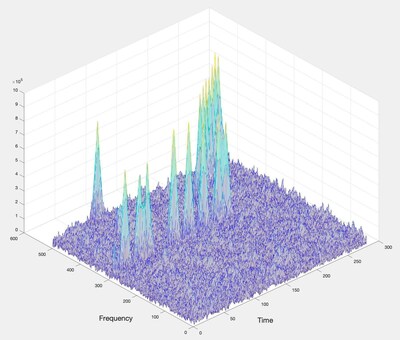The constellation of satellites for connecting via Bluetooth makes the first connection from space

On March 4, SpaceX's Transporter-10 ride-sharing mission, launched from Vandenberg Space Base in California, placed two satellites belonging to the Seattle-based Hubble Network into orbit. These satellites have achieved the seemingly impossible feat of making a Bluetooth connection to Earth from over 600 km away.
Founded in 2021 by Alex Haro, Ben Wild, and John Kim, Hubble Network had an uphill task ahead of it, as Bluetooth connections can notoriously fail when users are even in the same room.
Wild, founder of another Internet of Things (IoT) company, was shocked when he first heard this concept. However, from his experiences with IoT devices, he agrees that they are power hungry, extremely expensive to run and do not offer global connectivity.
The solution to this problem lies in the low-energy Bluetooth connections that Hubble has just demonstrated. “By demonstrating that we can send signals directly from Bluetooth chips and receive them in space over 600 km away, we have proven wrong thousands of skeptics who claimed that what we are attempting was impossible,” Haro, Hubble's CEO, said in a press release.
How does the technology work?
Hubble isn't reinventing Bluetooth technology in any way, it's just perfecting it. Its satellites communicate with 3.5mm Bluetooth chips already in phones and computers, which have only received a software update. The upgrade allows the chips to communicate over long distances at low power, including to a satellite orbiting in space.
The satellite's phased array antenna, which works like a magnifying glass, can pick up low-power signals from chips on the ground. The team also had to resolve issues related to Doppler and frequency mismatches in communication, as data was exchanged between objects traveling at high speeds, Tech Crunch said in its report.
The company claims to have solved the global connectivity problem by reducing battery consumption by 20 times and operating costs by 50 times. The company aims to connect a billion devices worldwide and transform various industries with its technology.
“Our mission to build the world's first truly global, affordable and battery-efficient grid has taken a significant leap forward with this technological breakthrough,” added Haro.
The company said it is already working with pilot customers in the consumer devices, construction and infrastructure, supply chain and logistics, agriculture, oil and gas and defense sectors.
A road to travel
Later this year, Hubble plans to launch a third satellite on another Transporter mission and follow it with a fourth satellite in the following months to form its 'beta' constellation. By late 2025-early 2026, the startup plans to launch 32 satellites at once to complete its production constellation.
When ready, the constellation will allow a Bluetooth connection to a Hubble satellite at least eight times a day. As the constellation expands, Hubble intends to engage in services such as ground monitoring or even in cases that require continuous coverage, such as monitoring falls in the elderly.
“With nearly five billion Bluetooth devices sold each year, our network has the potential to have a significant impact on numerous fields by making global connectivity accessible, low-power and affordable,” Wild said in the press release.

Thanks to our Telegram channel you can stay updated on the publication of new Economic Scenarios articles.
The article The constellation of satellites for connecting via Bluetooth makes the first connection from space comes from Economic Scenarios .
This is a machine translation of a post published on Scenari Economici at the URL https://scenarieconomici.it/la-costellazione-di-satelliti-per-la-connessione-via-bluetooth-effettua-la-prima-connessione-dallo-spazio/ on Sat, 04 May 2024 20:05:05 +0000.

